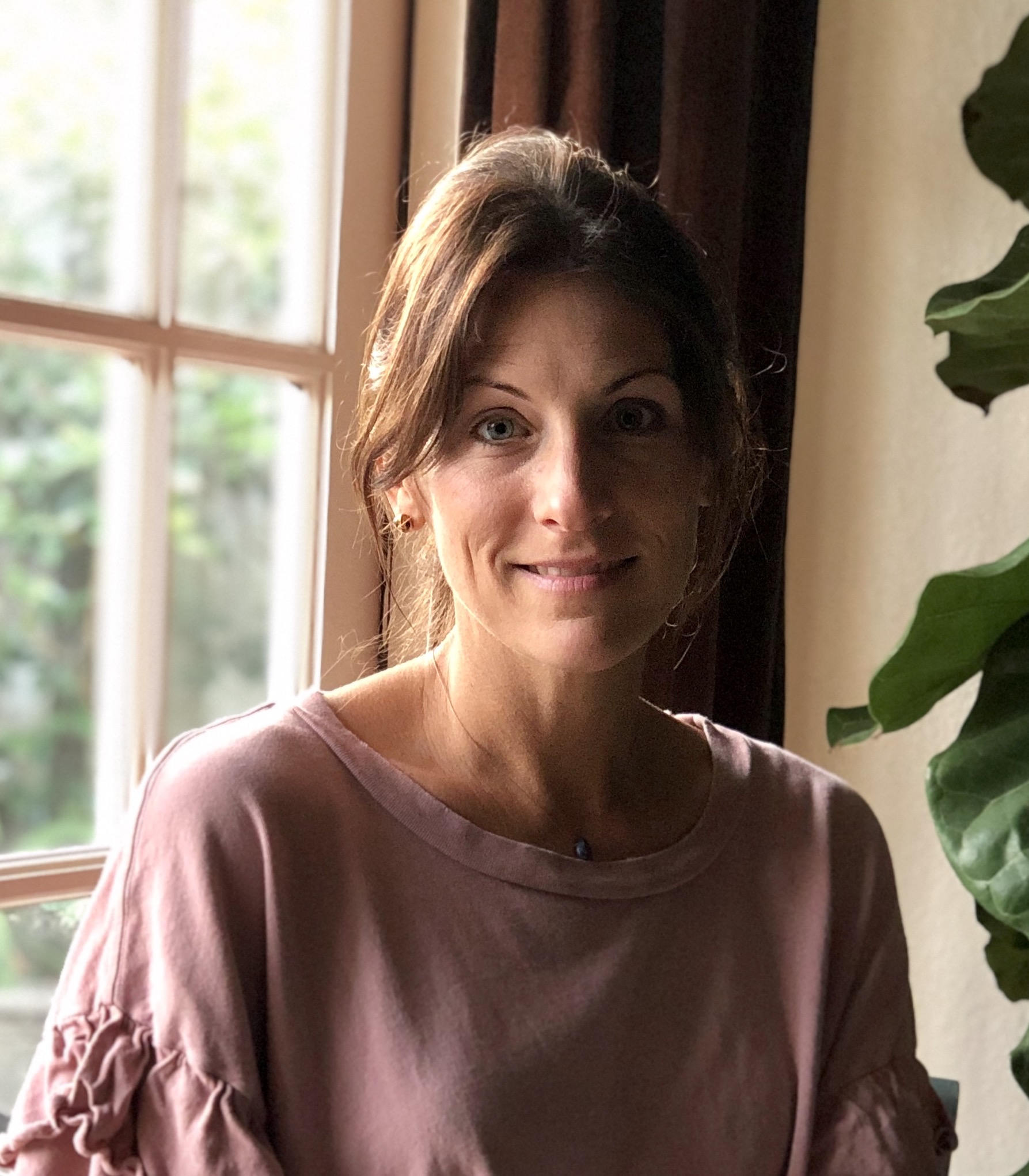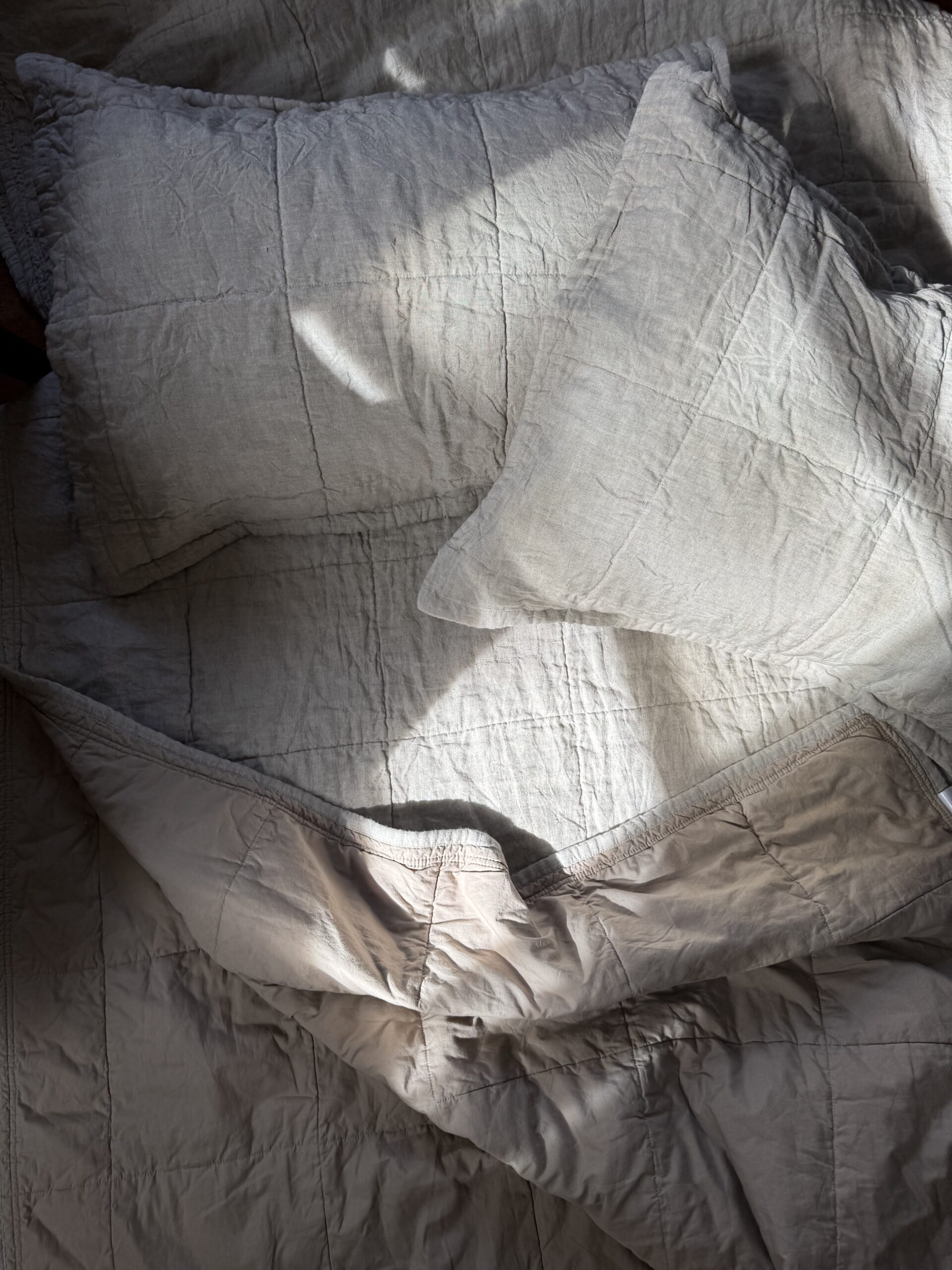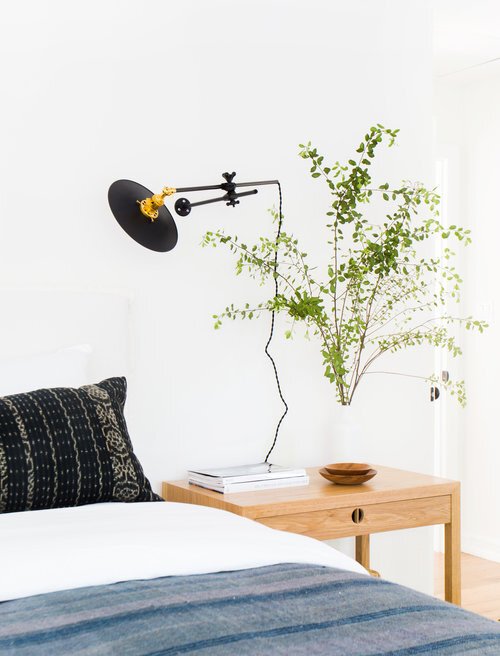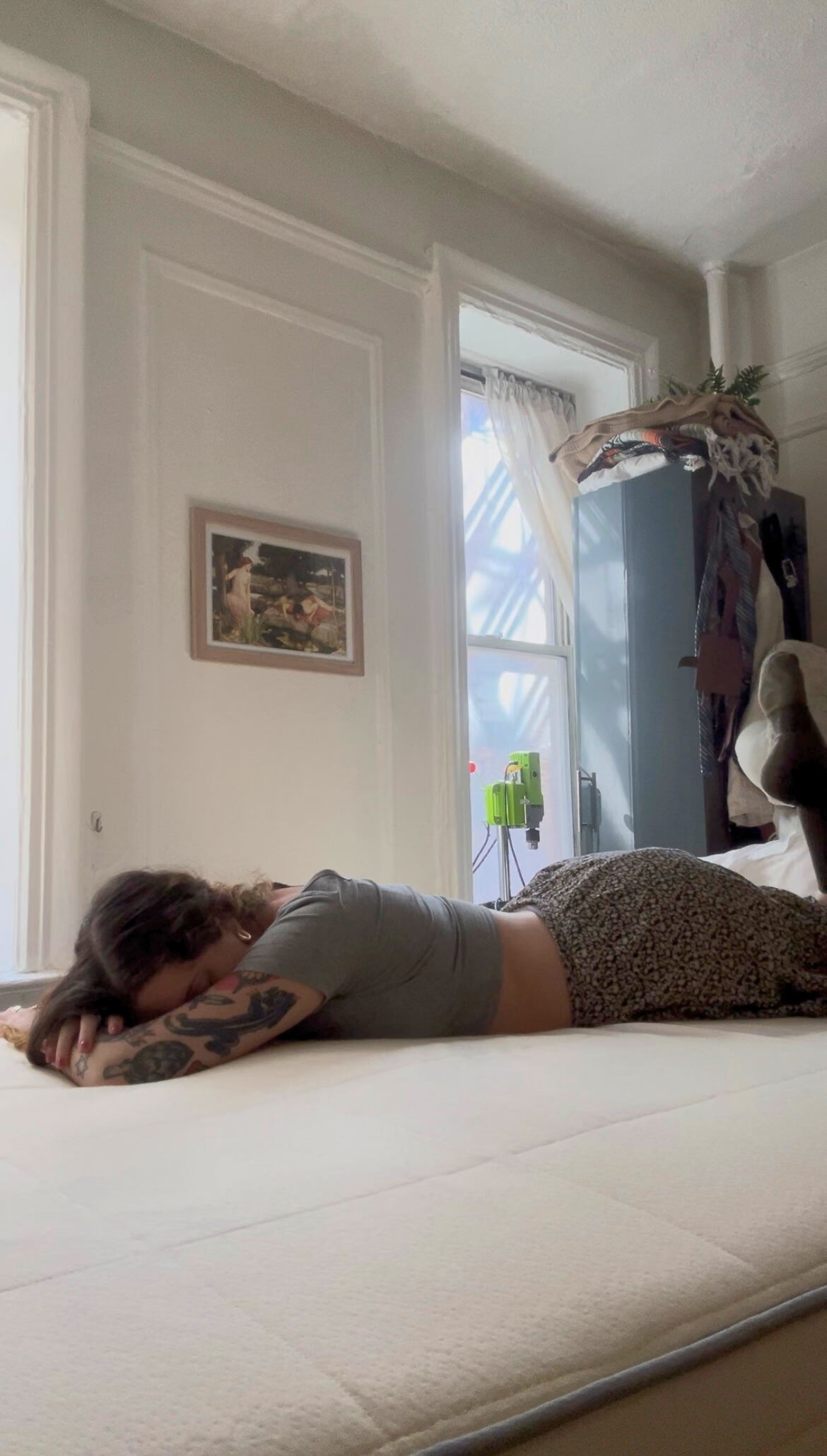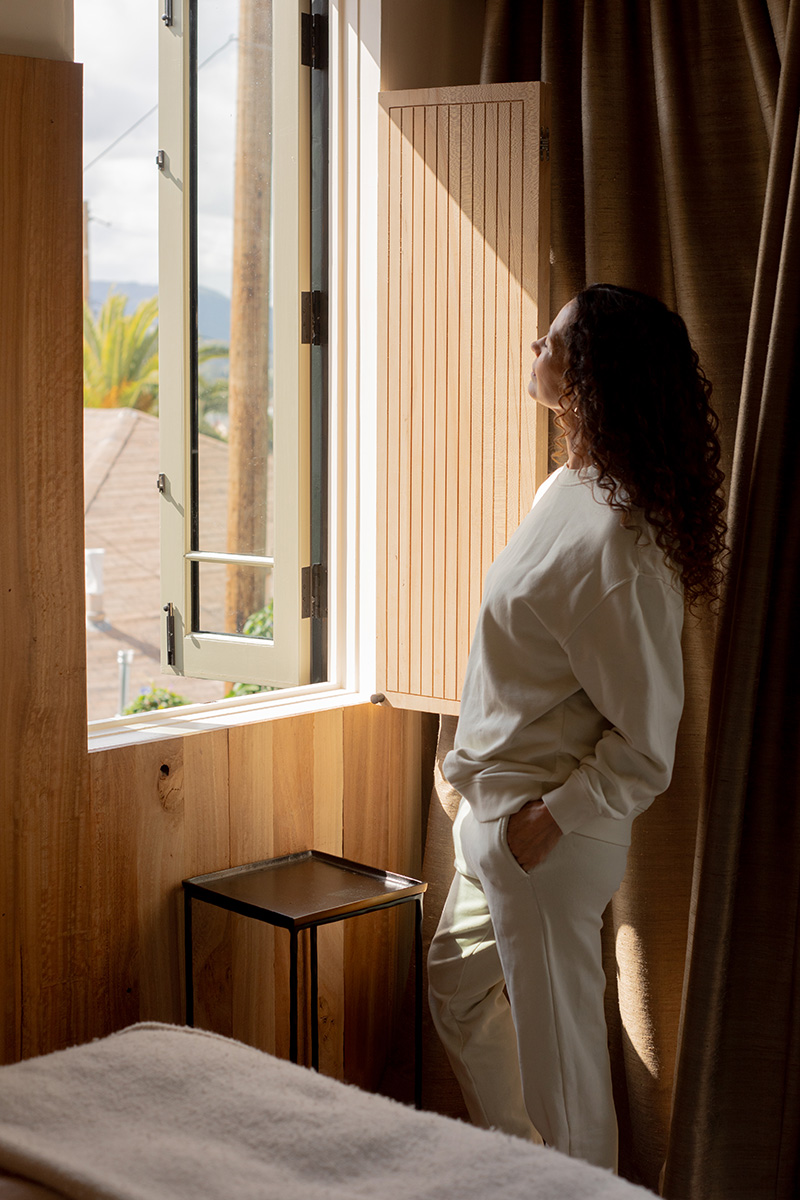
Are Naps Actually Beneficial?
To nap or not to nap? That is the question. By now, we know that proper sleep is essential to a plethora of bodily and brain functions. Lack of sleep — that’s less than seven hours a night for most adults — can adversely affect overall health, wreaking havoc on our immune system, metabolism, brain function, and more. Often, we try to plug in daytime naps as a way to counteract nighttime sleep deprivation. And even though the quality and amount of sleep garnered the night prior may determine if a catnap — or nap of any type — is in your daily forecast, the actual benefits of adult naps are a bit less defined.
“Lack of sleep can adversely affect overall health, wreaking havoc on our immune system, metabolism, brain function, and more.”
I’ve written about my subpar sleeping tendencies in years past. Here are the CliffsNotes: I’m a light sleeper, dolphin chronotype, and dislike sleep altogether. But because I know sleep is essential to well-being, I’ve made my sleep health a priority. Even though I’ve drastically improved my sleep hygiene with consistent sleep/wake times, less daytime caffeine, and a few other strategies, I still experience afternoon slumps. Recently, I’ve considered daytime naps and wondered if they could be beneficial in optimizing my energy levels and brain function.
We start as newborns sleeping the day away (and crying the night away). As we get older, our need to nap diminishes. By early-to-middle-aged adulthood, naps become reserved for dire situations, i.e., recovering from illness or losing nighttime sleep from parenting newborns and sick kiddos, watching an engrossing Netflix series, or staying out late. Most of us start daytime dozing again in our elder years as we experience age-related changes in circadian rhythms and sleep patterns. But some Mediterranean cultures have historically been known to shut down whole towns in honor of daytime siestas.
“After a few weeks of forced nap time, I realized how nice it was to have permission just to rest during the day.”
I experienced this while studying abroad in Spain during my college years. Admittedly, I was not a fan at first, but after a few weeks of forced nap time (especially the day after a late-night dinner and club experience), I realized how nice it was to have permission just to rest during the day. I even tried to incorporate it once I returned home to the U.S. — it did not stick, which suggested to me that the cultural norm was what allowed me to nap. Naps have historically not been widely accepted in America apart from those with jobs or careers requiring overnight shift work. Interestingly enough, through my research, I did discover that some people are genetically predisposed to nap-taking. (You might have already guessed, I am not one of them.)
What are the benefits of napping?
Although naps may temporarily counteract daytime fatigue, even consistent napping will not compensate for regular sleep debt. In other words, don’t count on naps to make up for a lack of consistent, quality nighttime sleep (seven to nine hours a night). If you find yourself chronically tired and unintentionally dozing, it’s time to check in with your doctor. That type of fatigue can be a sign of a more serious underlying health condition or an undiagnosed sleep disorder.
“Don’t count on naps to make up for a lack of consistent, quality nighttime sleep (seven to nine hours a night).”
That said, when naps are taken in conjunction with quality nighttime sleep and within specific parameters (discussed in the next section), they can offer brain-related perks, including clearer cognitive function and a sharper memory. In addition, the Mayo Clinic credits naps with providing relaxation, reducing occasional fatigue, increasing alertness, and improving mood and overall performance — a plus for managing both work and life!
However, the impact of napping on cardiovascular health is still a topic of debate. Some research shows a correlation between poor cardiovascular health and regular napping. By contrast, a 2017 review of research on the long-term health effects of napping, published in Sleep Medicine Reviews, found that middle-aged adults who nap have reduced risk for incidences of heart disease.
What is the ideal time and length of beneficial naps?
As tempting as it may seem, taking a nap in the late afternoon or evening as you inch closer to bedtime will likely make it harder for you to fall asleep and also negatively affect your nighttime sleep, causing you to wake up throughout the night. No one wants to experience poor-quality sleep because of a nap. It would be counterproductive. And longer naps make this even worse.
“Some people can get into cycles of napping by day and sleeping poorly at night as a consequence,” Alex Dimitriu, an MD double board certified in psychiatry and sleep medicine, told Healthline.
Instead, researchers recommend you aim for an early afternoon nap — after 1 p.m. but not later than 4 p.m. — when many folks, like myself, experience that natural dip in daytime energy. Some even say it’s best to nap prior to 2 p.m. just to be safe when it comes to preserving nighttime sleep. In addition, keeping that daylight snooze within a range of no less than 20 minutes but no longer than 90 minutes will offer the best benefits without causing sleep inertia — that grogginess, disorientation, drowsiness, and cognitive impairment we sometimes feel upon waking.
“Researchers recommend you aim for an early afternoon nap — after 1 p.m. but not later than 4 p.m. — when many folks, like myself, experience that natural dip in daytime energy.”
Many studies have shown that 20-minute naps can have a positive effect on our awareness during the rest of the day. Reviewing the literature, it appears that most research suggests naps in the 20–30 minute window. For myself, I find that when I set a nap timer for 25 minutes, I am able to wake quickly and avoid that cranky feeling. It’s likely best to aim for a 20–30-minute nap to beat your fatigue, rather than try to make up for the exact amount of lost sleep you may be experiencing.
In addition to the time of day and length of nap, the setting should also be considered. If you work from home like me, it’s easy to become distracted by housework, kids, and pets, and, therefore, it is hard to be still enough or prioritize a nap during the day. When possible, it’s best to seek a quiet, dark, temperature-controlled space to nap, and it is okay to nap in your bed as long as you set an alarm. Napping in an office environment may be a bit tougher. However, many workplaces that prioritize the health and wellness of employees have recognized the productivity benefit of daytime napping and, therefore, provide spaces and time devoted to napping.
Alongside this guidance, it’s important to account for your specific health conditions and needs. For instance, one study showed that daily afternoon naps during the late stages of pregnancy had a positive correlation with healthier birth weights of their newborns.
So, what’s the consensus?
Taken together, research shows that the benefits of intentional napping outweigh the risks for most healthy adults — as long as you stick to the guidelines and don’t rely on naps to compensate for poor quality and quantity of regular sleep.
“Consider this permission for occasional intentional naps.”
“I consider napping to be a good thing, but it needs to be taken in the context of the person and his or her own sleep cycles and body,” medical director of Johns Hopkins Sleep Disorders Center Charlene Gamaldo, M.D. offers.
Consider this permission for occasional intentional naps. If nothing else, quick daytime naps a few times a week, in the right setting and context, allow us to slow down, refresh, and recharge in the midst of our increasingly fast-paced and busy lives.
Randi Donahue is a Contributing Editor at The Good Trade. She is currently earning an MS in Health Science and Functional & Integrative Nutrition from Northwestern Health Sciences University. She brings over 10 years of research and writing expertise, focusing on making complex health and wellness concepts more accessible to readers. When not writing about health topics, you can find her reviewing the latest outdoor products and wellness tech. Based on Florida’s Gulf Coast, she and her family are passionate about nature and believe the path to a healthy and prosperous life requires authenticity, kindness, and a whole lot of fresh air.
